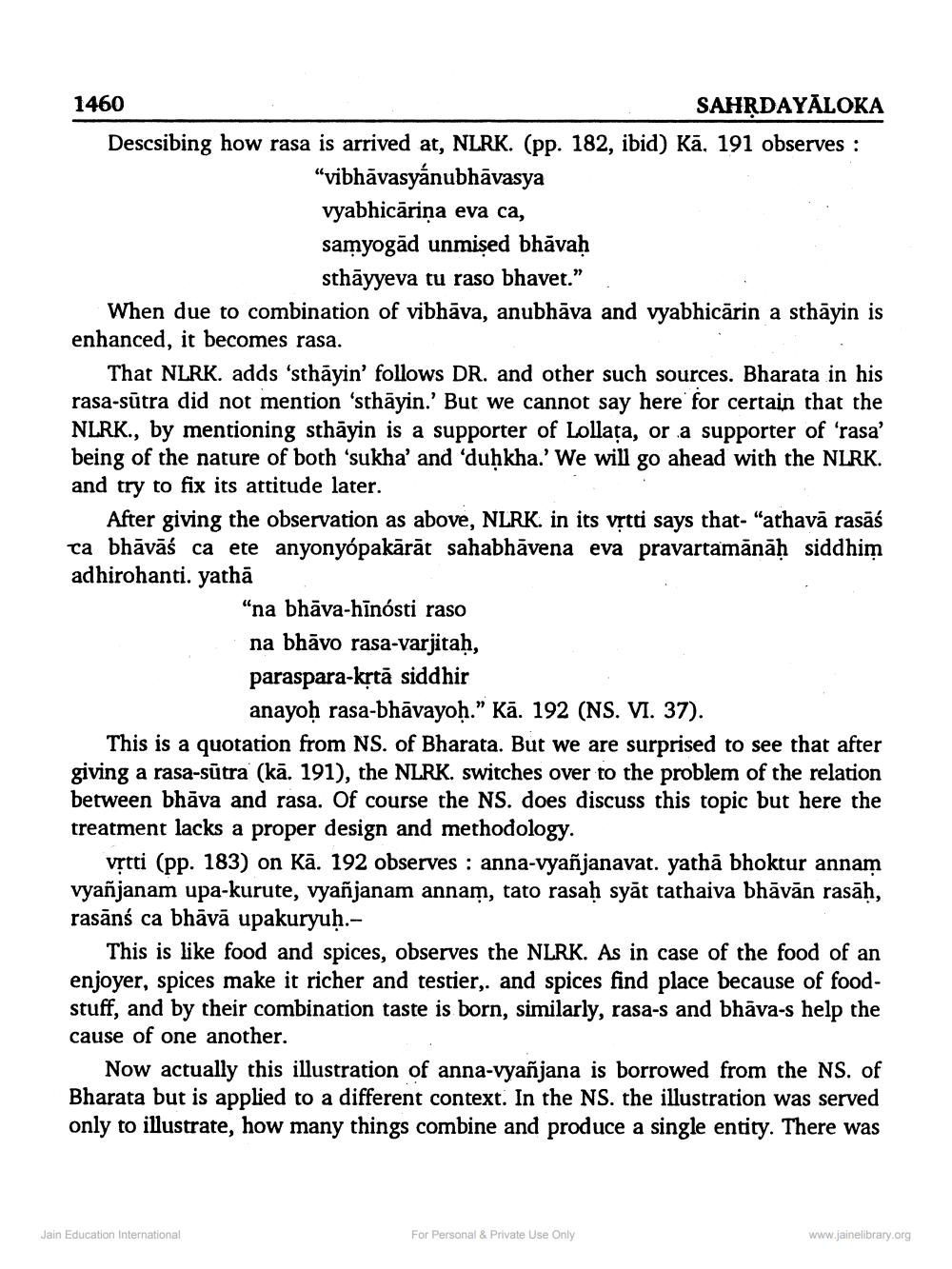________________
1460
SAHRDAYĀLOKA Descsibing how rasa is arrived at, NLRK. (pp. 182, ibid) Kā. 191 observes :
“vibhāvasyánubhāvasya vyabhicāriņa eva ca, samyogād unmised bhāvaḥ
sthāyyeva tu raso bhavet." When due to combination of vibhāva, anubhāva and vyabhicārin a sthāyin is enhanced, it becomes rasa.
That NLRK. adds 'sthāyin' follows DR. and other such sources. Bharata in his rasa-sūtra did not mention 'sthāyin.' But we cannot say here for certain that the NLRK., by mentioning sthāyin is a supporter of Lollata, or a supporter of 'rasa' being of the nature of both 'sukha' and 'duḥkha.' We will go ahead with the NLRK. and try to fix its attitude later.
After giving the observation as above, NLRK, in its vrtti says that "athava rasās ta bhāvāś ca ete anyonyópakārāt sahabhāvena eva pravartamānāḥ siddhim adhirohanti. yathā
"na bhāva-hīnósti raso na bhāvo rasa-varjitaḥ, paraspara-kytā siddhir
anayoḥ rasa-bhāvayoḥ.” Kā. 192 (NS. VI. 37). This is a quotation from NS. of Bharata. But we are surprised to see that after giving a rasa-sūtra (kā. 191), the NLRK. switches over to the problem of the relation between bhāva and rasa. Of course the NS. does discuss this topic but here the treatment lacks a proper design and methodology.
vrtti (pp. 183) on Kā. 192 observes : anna-vyañjanavat. yathā bhoktur annam vyañjanam upa-kurute, vyañjanam annam, tato rasah syāt tathaiva bhāvān rasāh, rasāns ca bhāvā upakuryuh.
This is like food and spices, observes the NLRK. As in case of the food of an enjoyer, spices make it richer and testier, and spices find place because of foodstuff, and by their combination taste is born, similarly, rasa-s and bhāva-s help the cause of one another.
Now actually this illustration of anna-vyañjana is borrowed from the NS. of Bharata but is applied to a different context. In the NS. the illustration was served only to illustrate, how many things combine and produce a single entity. There was
Jain Education International
For Personal & Private Use Only
www.jainelibrary.org




